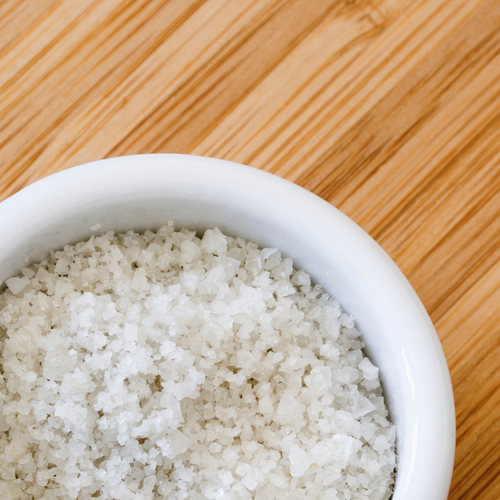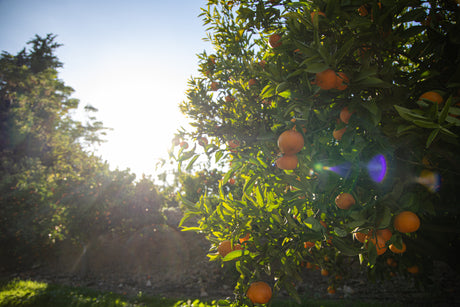The difference between sea salt and Flor de Sal: A look at two natural treasures
Salt is not only a staple food but also a crucial ingredient in culinary arts. Among the various types of salt available today, sea salt and flor de sal stand out. Both come from the sea, but their production, texture, and uses differ significantly. In this post, we delve deep into the world of these two salts to explore their unique properties.
What is sea salt ?
Sea salt is extracted from seawater concentrated in shallow salt marshes through evaporation. This process is powered by the sun and wind. Once the water evaporates, the salt crystallizes and is harvested by hand or machine. The extracted salt is then purified and can be used for a variety of purposes, from cooking to cosmetics.
Sea salt is characterized by a somewhat coarser texture and is usually less pure than refined salt. It contains minerals such as magnesium, calcium, and potassium, which give the salt a mild and slightly complex flavor. Depending on the origin of the sea salt, the color and flavor may vary slightly, as it often contains traces of sediment or other natural elements.
What is Flor de Sal ?
Flor de Sal, also known as "the flower of salt," is an exclusive and highly prized variety of sea salt. It is only produced under perfect conditions: When the surface of the salt marshes begins to crystallize slightly on hot, windless days, fine, delicate salt flakes form. These crystals float on the water's surface and are carefully skimmed off by hand using special tools.
Flor de Sal is known for its unique texture—light, flaky, and delicate. It contains a higher percentage of natural minerals than conventional sea salt and has a subtle, distinctive depth of flavor. Due to the complex manufacturing process and the limited quantities that can be produced, Flor de Sal is more expensive and is considered a gourmet product.
The most important differences
1. Production
The main difference between sea salt and Flor de Sal lies in their extraction process. While sea salt is extracted from the complete evaporation of seawater, Flor de Sal is only produced under optimal weather conditions and is manually skimmed before it sinks to the ground. This meticulous process makes Flor de Sal a rare and luxurious product.
2. Textur
Sea salt is generally coarser and granular. It can be sold both unrefined and refined. Flor de Sal, on the other hand, is very fine and has a flaky, almost fragile texture. It dissolves easily on the tongue and offers a pleasant texture that's ideal for adding a finishing touch to dishes.
3. Taste
Flor de Sal is often described as having a milder yet more intense flavor. It has a higher concentration of minerals such as magnesium and calcium, which give it a unique taste. Sea salt also has a pleasant flavor, but is often somewhat less subtle and is frequently used as an all-purpose salt.
4. Use in the kitchen
Sea salt has a wide range of uses—for cooking, baking, or preserving food. It's often used in larger quantities because it's more cost-effective and provides a solid salty flavor. Flor de Sal, on the other hand, is a finishing salt. It's used sparingly to round out dishes and add a special touch. It's great in salads, grilled meats, fish, or even desserts like caramel and chocolate.
5th prize
Cost is another significant difference. Sea salt is cheaper and available in larger quantities because it is easier and faster to produce. Flor de Sal is significantly more expensive due to its complex production process and limited availability. It is often sold in small quantities and marketed as a luxury product.
Which salt is right for you?
The choice between sea salt and flor de sal depends on your intended use and your budget. If you're looking for an all-round salt for everyday use, sea salt is an excellent choice. It's affordable and versatile without sacrificing flavor.
However, if you're looking to create a gourmet experience, flor de sal is the perfect option. It adds a special touch to your dishes and elevates simple meals to a new level. Remember to use flor de sal sparingly—just a touch is enough to bring out the flavor.
Conclusion
Whether sea salt or Flor de Sal, both have their place in the kitchen. While sea salt is a reliable everyday companion, Flor de Sal shines with its exclusivity and incomparable flavor. For home cooks and gourmets, having high-quality Flor de Sal in the kitchen is a worthwhile investment – whether to impress guests or to treat yourself to a touch of luxury.
No matter what you choose, both types of salt bring the flavors of the sea to your plate and make your dishes a special treat.
We get our salt from the Ria Formosa nature reserve here in the Algarve, where salt is still extracted by hand.
You can find out more about Ria Formosa salt here .



